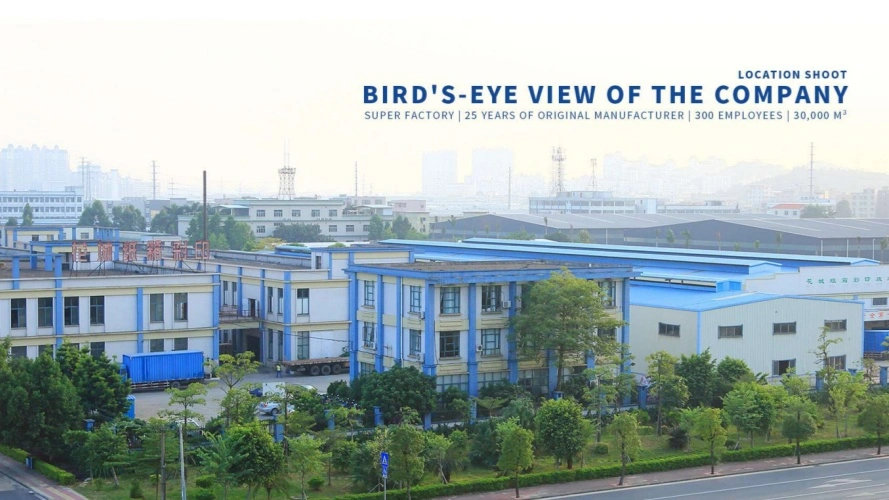When sourcing collapsible rigid box solutions for premium packaging needs, import challenges can severely impact business operations and bottom-line results. These space-efficient packaging innovations have revolutionized industries from luxury cosmetics to high-end electronics, offering up to 60% savings in shipping costs compared to traditional rigid boxes. However, the complexity of international procurement often creates unexpected hurdles. Customs delays, quality inconsistencies, regulatory compliance issues, and hidden fees plague many businesses attempting to import these sophisticated packaging products. Understanding these common pitfalls and implementing preventive strategies ensures smooth supply chain operations while maximizing the cost-effectiveness and premium appeal that collapsible rigid packaging provides for your brand.

Common Import Problems When Buying Collapsible Rigid Boxes
Import challenges with packaging products often manifest in several predictable yet avoidable patterns that can derail procurement timelines and inflate costs significantly. Understanding these common obstacles enables proactive mitigation strategies. Documentation errors represent the most frequent cause of customs delays, particularly when product classifications are inaccurate or certificates of origin contain discrepancies. Many buyers underestimate the complexity of packaging product classifications, leading to mismatched tariff codes and subsequent customs holds. Quality inconsistencies across shipments create another significant challenge, especially when suppliers lack standardized production protocols or when communication gaps exist between buyer specifications and manufacturing execution. Unexpected import taxes and duties frequently surprise procurement teams who fail to conduct thorough tariff research before placing orders. These additional costs can exceed 15-25% of product value in certain markets, significantly impacting project budgets and profitability margins. Regulatory compliance issues emerge when packaging materials fail to meet destination country standards for food contact applications, environmental regulations, or safety certifications. Shipping damage represents another critical concern, particularly with collapsible packaging that requires precise folding mechanisms and structural integrity. Inadequate protective packaging during transit can compromise the functionality of magnetic closures, creasing lines, and lamination adhesion, resulting in product losses and customer dissatisfaction.
Root Causes Behind Import Challenges and How to Address Them
Identifying the fundamental sources of import difficulties enables targeted solutions that prevent recurring problems and establish reliable procurement processes for packaging products. Insufficient supplier vetting creates cascading problems throughout the import process. Many businesses focus solely on price comparisons without evaluating manufacturing capabilities, quality certifications, or export experience. Comprehensive supplier assessments should examine ISO certifications, production capacity, quality management systems, and previous export performance. Evaluating suppliers' FSC certifications, G7 color management capabilities, and environmental compliance demonstrates their commitment to international standards. Poor communication protocols between buyers and manufacturers frequently lead to specification misunderstandings and quality variances. Establishing detailed technical specifications, material requirements, finishing processes, and tolerance parameters prevents production errors. Regular communication checkpoints during manufacturing ensure any issues are identified and resolved before shipment. Inadequate documentation preparation causes the majority of customs delays and additional fees. Successful importers maintain detailed documentation protocols that include accurate product descriptions, harmonized tariff codes, certificates of origin, and compliance declarations. Working with experienced customs brokers who specialize in packaging imports provides valuable expertise in navigating complex regulatory requirements. Limited understanding of international packaging standards creates compliance risks that can result in shipment rejections or market access restrictions. Staying current with evolving regulations regarding recyclability, chemical restrictions, and labeling requirements ensures products meet all destination market requirements.
Practical Strategies to Ensure Smooth Import and Procurement Process
Implementing systematic approaches to import management reduces risks while optimizing costs and delivery timelines for packaging procurement projects. Establishing clear supplier qualification criteria creates a foundation for reliable partnerships. Successful qualification processes evaluate manufacturing capabilities, quality certifications, export experience, and financial stability. Suppliers should demonstrate compliance with relevant standards such as ISO9001 quality management, ISO14001 environmental management, and industry-specific certifications like Disney approval for entertainment industry applications.
Quality assurance protocols throughout the production process prevent costly issues and ensure consistent product performance. These protocols should include:
- Pre-production samples and approvals: Detailed prototype review ensures design specifications, material quality, and finishing processes meet requirements before full production begins. This stage allows for adjustments to folding mechanisms, magnetic closure strength, and surface treatments.
- In-process quality monitoring: Regular production updates with photographic documentation verify adherence to specifications during manufacturing. Monitoring printing registration, die-cutting precision, and assembly quality prevents accumulation of defective products.
- Pre-shipment inspection protocols: Comprehensive final inspections verify product functionality, cosmetic quality, and packaging integrity before export. Testing collapsible mechanisms, magnetic closure alignment, and overall structural integrity ensures products arrive ready for use.
These quality measures work together to maintain consistency across production runs while building confidence in supplier capabilities and product reliability. Technology integration streamlines documentation management and enhances supply chain visibility. Digital platforms for tracking shipment progress, managing compliance documents, and coordinating communications reduce administrative burdens while improving response times to potential issues. Automated document generation systems ensure accuracy and completeness of customs paperwork. Strategic partnerships with experienced logistics providers specializing in packaging imports offer valuable expertise in navigating complex regulatory environments. These partners provide guidance on tariff optimization, regulatory compliance, and efficient shipping methods that minimize costs and transit times.
Case Studies: Successful Import Experiences with Collapsible Rigid Boxes
Real-world examples demonstrate how proactive management and strategic partnerships resolve common import challenges while achieving cost savings and quality improvements. A luxury cosmetics company faced recurring quality inconsistencies with magnetic gift box imports that damaged their premium brand image. By implementing comprehensive supplier training programs and establishing detailed quality specifications, they achieved 98% consistency across subsequent shipments. The solution included detailed documentation of folding tolerances, magnetic closure strength requirements, and surface finishing standards. Regular video conferences during production allowed real-time quality monitoring and immediate correction of any deviations. An electronics manufacturer eliminated customs delays by developing a standardized documentation protocol with their packaging supplier. This comprehensive approach included pre-verified tariff classifications, template-based commercial invoices, and automated certificate generation. The implementation reduced average customs clearance time from 7 days to 2 days while eliminating documentation-related penalties and fees. A premium gift retailer achieved 30% cost reduction in import duties by working with their supplier to optimize material classifications and leverage preferential trade agreements. Strategic material selection and proper documentation of recycled content percentages qualified their packaging for reduced tariff rates while maintaining premium aesthetic appeal and structural performance.
Summary: Key Takeaways to Avoid Import Problems When Buying Collapsible Rigid Boxes
Successfully importing premium packaging requires systematic approaches that address documentation accuracy, supplier reliability, quality consistency, and regulatory compliance. Comprehensive supplier evaluation focusing on certifications, manufacturing capabilities, and export experience establishes reliable partnerships. Clear communication protocols and detailed specifications prevent misunderstandings that lead to quality issues. Proactive documentation management and customs expertise minimize delays and unexpected costs. Technology integration and strategic logistics partnerships enhance visibility and efficiency throughout the import process. By implementing these practices, businesses can leverage the significant cost advantages and premium appeal of collapsible packaging while avoiding common procurement pitfalls.
Partner with FetchingPrinting for Reliable Collapsible Rigid Box Manufacturing
Ready to eliminate import headaches while securing premium collapsible rigid box solutions for your brand? FetchingPrinting brings 25 years of manufacturing expertise and export experience to simplify your procurement process. Our ISO-certified facility spans 50,000㎡ with advanced production capabilities including KBA UV printing, Heidelberg precision equipment, and automated assembly lines that ensure consistent quality across every shipment.
We offer three patented collapsible rigid box sizes—Large (100-150mm height), Medium (50-100mm height), and Tiny (20-50mm height)—each engineered to save over 60% in shipping costs compared to traditional rigid boxes. Our comprehensive material options include SBS C1S, SBS C2S, CCNB, and premium metallic substrates, all available with FSC certification and complete regulatory compliance documentation.
Our streamlined ordering process eliminates common import challenges through expert consultation, detailed solution design, and pre-shipment sample approval. With over 1,000 satisfied international clients and complete certifications including ISO9001, ISO14001, and Disney approval, we handle all export documentation and compliance requirements. Experience worry-free importing with a trusted collapsible rigid box supplier that prioritizes quality, compliance, and customer success. Contact us at public@fetchingprinting.com to discuss your specific requirements and receive samples that demonstrate our manufacturing excellence.
Frequently Asked Questions
Q1: What certifications should I verify when selecting a collapsible rigid box supplier?
A: Essential certifications include ISO9001 quality management, ISO14001 environmental compliance, FSC forest stewardship, and industry-specific approvals like Disney certification. These certifications demonstrate systematic quality control, environmental responsibility, and compliance with international standards that facilitate smooth customs clearance and market acceptance.
Q2: How can I minimize unexpected import taxes and duties on packaging purchases?
A: Conduct thorough tariff research using official customs databases, work with experienced customs brokers familiar with packaging classifications, and consider material composition optimization to qualify for preferential rates. Proper documentation of recycled content and environmental certifications can reduce duty rates in many markets.
Q3: What should I include in quality specifications for collapsible box imports?
A: Comprehensive specifications should cover material composition, structural tolerances, magnetic closure strength, folding mechanism precision, printing quality standards, and surface finishing requirements. Include clear acceptance criteria for cosmetic defects, dimensional variations, and functional performance to ensure consistent quality across shipments.


